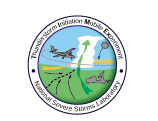
 Kingsmill
Kingsmill
Hypothesis (Kingsmill) on the role of boundary layer convergence line inflections in convective initiation |
|
|
David Kingsmill on November 16, 1997 at 13:33:18: In a thermodynamically unstable environment, horizontal inflections in boundary layer convergence lines are preferred areas of convective development due to enhanced lifting of air parcels at these locations. Motivation: Horizontal wave patterns or shearing instabilities have been observed along many boundary layer convergence lines (e.g., McCarthy and Koch 1982; Carbone 1982,1983; Mueller and Carbone 1987; Wakimoto and Wilson 1989; Kingsmill 1995). They usually manifest themselves as a series of small scale vertical vorticity maxima (i.e., misocyclones) spaced at regular intervals along a boundary. These phenomena (what I term inflections) have most often been used in the explanation of non-supercell tornadogenesis. However, in the more recent literature, there has been speculation that inflections play a role in convective initiation (Kingsmill 1995; Lee and Wilhelmson 1997). These studies have focused on the convergence and vertical velocity maxima that form adjacent to each of the vertical vorticity maxima. If the convergence and vertical velocity maxima are persistent, enhanced lifting of air parcels and convective development at these locations may result. Further study and additional datasets are required to better understand this relationship. |
|
|
Prior to the development of deep convection, use clear-air Doppler radar (WSR-88D, DOW, ELDORA) to identify a boundary layer convergence line with inflection(s). Sample the kinematic structure of the boundary within the full-depth of the boundary layer with clear-air Doppler radar measurements from the dual-DOW system, and/or ELDORA. Sample the thermodynamic structure of the boundary within the full depth of the boundary layer with M-CLASS, mobile surface mesonet, ground-based and airborne DIAL water vapor lidar, and mobile ground-based water vapor radiometer. In situ aircraft measurements could be used to validate the remotely sensed kinematic and thermodynamic structures. Monitor for the development of deep convection with WSR-88D, DOW s, and ELDORA. References: Carbone, R. E., 1982: A severe frontal rainband. Part I: Stormwide hydrodynamic structure. J. Atmos. Sci., 39, 258- 279. Carbone, R. E., 1983: A severe frontal rainband. Part II: Tornado parent vortex circulation. J. Atmos. Sci., 40, 2639- 2654. Kingsmill, D. E., 1995: Convection initiation associated with a sea-breeze front, a gust front, and their collision. Mon. Wea. Rev., 123, 2913-2933. Lee, B. D., and R. B. Wilhelmson, 1997: The numerical simulation of non-supercell tornadogenesis. Part I: Initiation and evolution of pretornadic misocyclone circulations along a dry outflow boundary. J. Atmos. Sci., 54, 32-60. McCarthy, J., and S. E. Koch, 1982: The evolution of an Oklahoma dryline. Part I: A meso- and subsynoptic scale analysis. J. Atmos. Sci., 39, 225-236. Mueller, C. K., and R. E. Carbone, 1987: Dynamics of a thunderstorm outflow. J. Atmos. Sci., 44, 1879-1898. Wakimoto, R. M., and J. W. Wilson, 1989: Non-supercell tornadoes. Mon. Wea. Rev., 117, 1113-1140. |
|
|
In a thermodynamically unstable environment: |
|
|
The following appear in order; discussion points may directly refer to one or more comments preceeding it.
Click here to comment on this hypothesis. Please reference: KINGSMILL. |
|